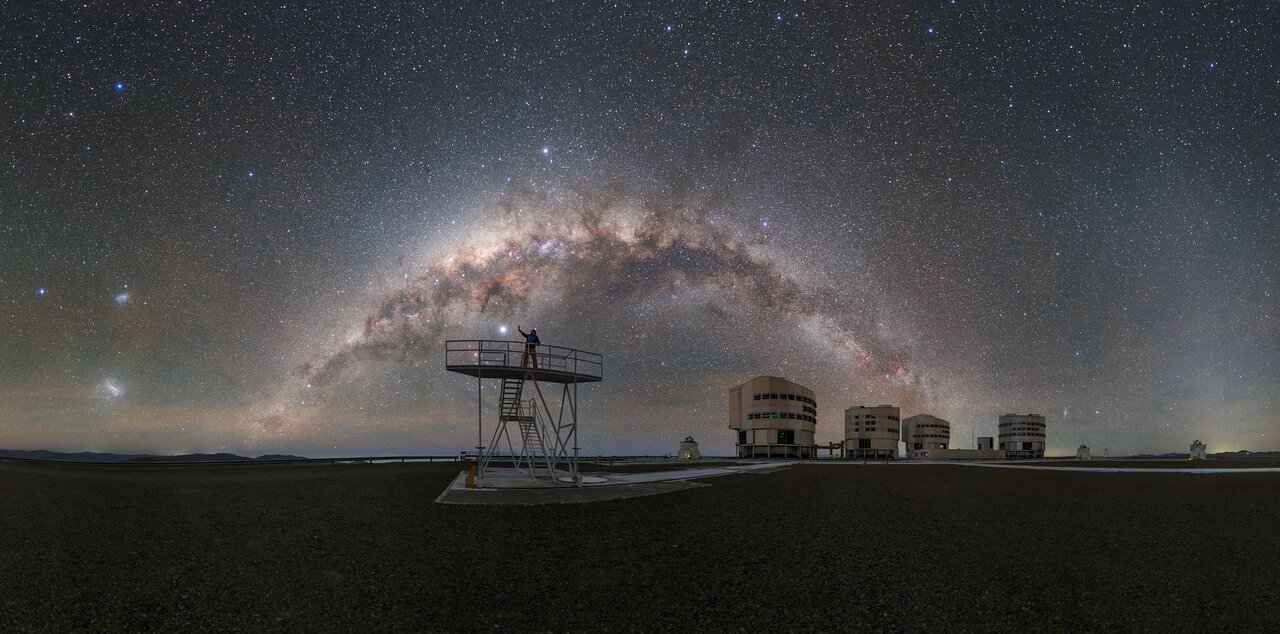On December 24th, AES Andes, a subsidiary of the US power company AES Corporation, submitted a project for a massive industrial complex for environmental impact assessment. This complex threatens the pristine skies above ESO’s Paranal Observatory in Chile’s Atacama Desert, the darkest and clearest of any astronomical observatory in the world. The industrial megaproject is planned to be located just 5 to 11 kilometres from telescopes at Paranal, which would cause irreparable damage to astronomical observations, in particular due to light pollution emitted throughout the project’s operational life. Relocating the complex would save one of Earth’s last truly pristine dark skies.
Click here to read the news on ESO.

Closer to Earth, the four Unit Telescopes (UTs) that comprise the VLT can be seen in the background. Each UT features an 8.2-metre mirror and they operate synergistically to produce some of the sharpest views of the Universe. Accompanying the four UTs are four smaller, moveable Auxiliary Telescopes (ATs) which have 1.8-metre mirrors.
The Chilean Atacama desert once again proves its value as the ideal location for ESO’s VLT. The remoteness of the observatory means that there is very little to no light pollution, which is vital for astronomy and also yields such breathtaking views- Credit:ESO/P. Horálek
